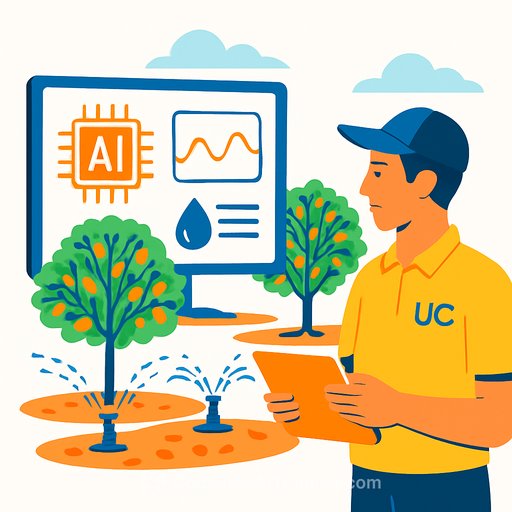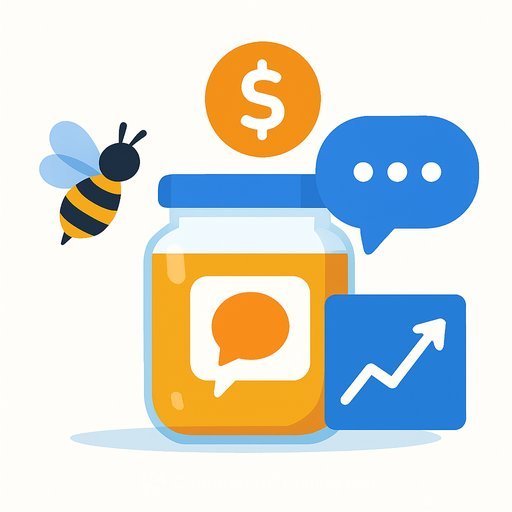UC Merced, UC ANR test AI-guided irrigation at Kearney REC
October 2, 2025
An almond orchard in Parlier is running a clear experiment: traditional irrigation vs. AI-guided watering. The goal is simple and measurable-use less water without sacrificing yield, then share what works with growers and the broader community.
Two test beds, one question
The team installed two plots at the Kearney Agricultural Research and Extension Center-one managed with conventional irrigation and one controlled by an AI system. "We will compare how much water each test bed will use," said UC Merced computer science and engineering Professor Wan Du, "and then compare the production and result of these two fields."
The system will go live next spring, aligned with bloom, so researchers can capture a full season of data from bud to harvest.
How the system works
Sensors measure soil moisture and the movement of water through each tree, right down to what exits the leaves. That data streams to the internet where an algorithm analyzes conditions and triggers irrigation events.
"We have sprinklers under almost every tree so we can control them," Du said. The model decides which sprinkler to open and for how long. The objective is direct: "We want to save as much water as we can. Saving water will reduce the cost to growers, and we can save the natural resource for the next generation."
Who's building it
The project is led by Professor Wan Du and funded by the Fall 2023 Climate Action Seed Funds. UC Merced civil and environmental engineering Professor Safeeq Khan, a water resource management and soil science expert and Agricultural Experiment Station faculty member, built the soil model. Computer science and engineering Professor Stefano Carpin developed the AI model.
Why this matters to IT, development, PR, and communications
- IT and developers: This is a real-world data pipeline-field sensors, connectivity, model inference, and actuator control-tested against cost and yield metrics.
- PR and communications: Storytelling is part of the project charter, built to translate technical work into outcomes growers care about: gallons saved, dollars saved, and crop performance.
- Metrics to watch: water use per acre, yield per gallon, runtime per tree, and system reliability during peak demand.
- Constraints to solve: variable connectivity in fields, sensor noise, model drift, and operational handoff to growers.
Student storytellers amplify the work
A student team working with the nonprofit From Farms to Incubators is documenting the project and sharing its progress. Founder and chief content director Amy Wu created a program that trains students in digital storytelling, science communication, and how to report on agricultural technology. "We also have a guest speaker series where they have been able to connect with rock stars in ag tech," Wu said.
Students visited UC Merced to meet the researchers, then headed to the farm in Parlier to see the system in action. They practiced interviewing, writing, and visual documentation, producing stories, photos, and videos for audiences ranging from consumers interested in innovation to farmers managing climate risk.
Hands-on learning: code, sensors, and clarity
UC Merced undergraduate Anvi Kudaraya studied the system architecture to understand the field sensors, the irrigation model, and the dashboards. She wrote Python scripts to process real sensor data-"how to handle messy, real-world datasets and prepare them for machine learning models."
She also leaned into communication. "I learned how important it is to connect technology to a broader purpose, especially when the work can impact something as essential as water use in agriculture." Farm visits, writing, editing, and photo documentation rounded out the experience.
Computer science and engineering major Savio Jabbo added: "Usually the work that goes into these projects goes unnoticed. But when you see the impact that it has even on such a small scale, it feels like the whole world should know about it."
What's next
The AI-controlled plot will run through the growing season starting next spring. Expect side-by-side comparisons on water use and production, and practical guidance for growers.
- Background on precision agriculture: USDA NIFA overview
- Learn more about UC Merced: University site
Build your AI skill stack
If you work in IT, development, or communications and want to speak fluently about projects like this-from data ingestion to outcomes and messaging-these resources can help:
This article was first published on the UC Merced News site.
Your membership also unlocks:










